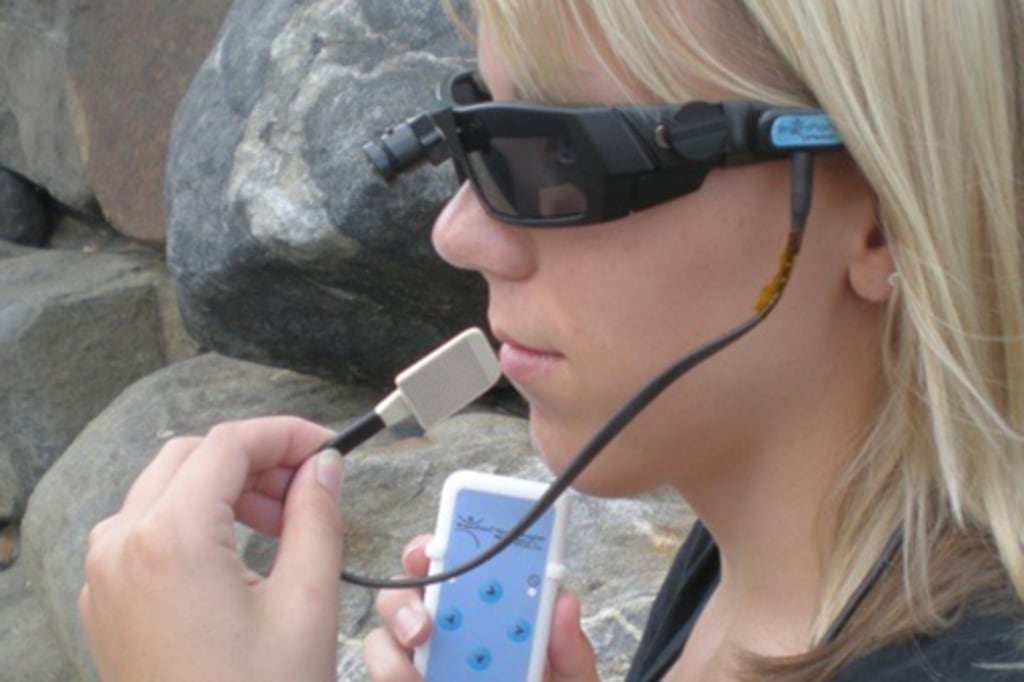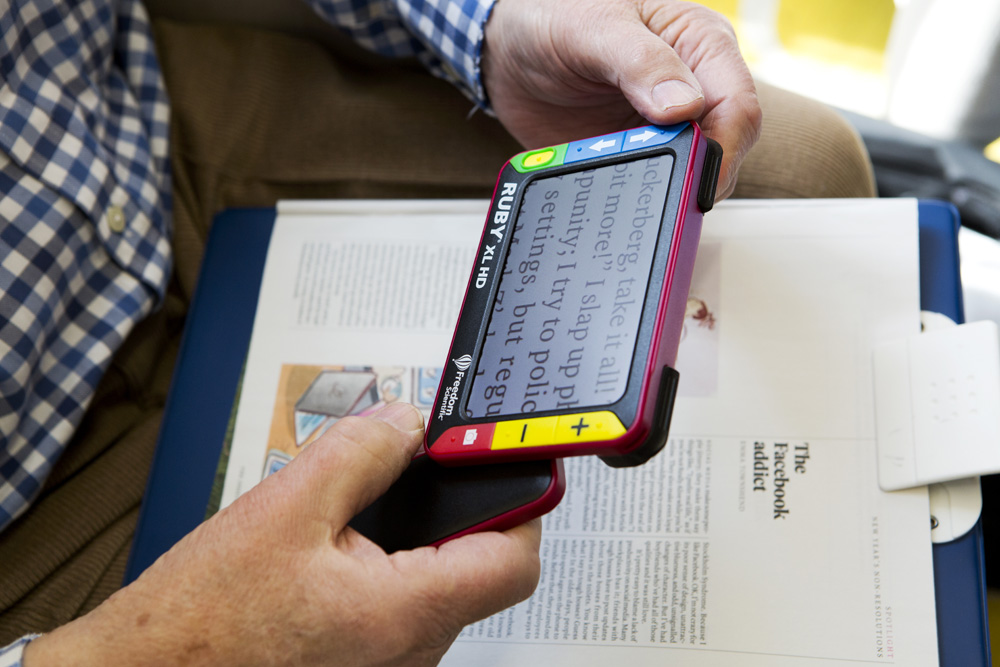Enhance Accessibility with Braille Tools and Notetakers
Wiki Article
Enhancing Lives With Advanced Assistive Tools for the Blind
The integration of advanced assistive tools for the blind is changing how people experience their environments and communicate with their communities. What does this advancement indicate for the future of assistive technology and its duty in equipping individuals?Overview of Assistive Tools
Assistive tools for the blind encompass a diverse variety of modern technologies and tools made to enhance self-reliance and boost the top quality of life for people with visual disabilities. These tools deal with various requirements, from navigation and wheelchair to interaction and day-to-day job monitoring.One of the primary categories of assistive gadgets includes wheelchair help, such as white walking canes and overview dogs, which help individuals browse their environments safely. Digital travel help, geared up with sensors and audio comments, also play a significant duty in wheelchair enhancement.
Furthermore, gadgets that assist with day-to-day living tasks, such as flexible cooking area devices, Braille labels, and speaking watches, equip individuals to carry out tasks independently. Communication help, consisting of display visitors and Braille screens, assist in accessibility to details and enable people to involve successfully with the digital globe.
In addition, low-tech services like magnifying glasses and large-print products remain essential for several users. Collectively, these assistive tools offer not just as practical devices however likewise as important enablers of autonomy, fostering greater engagement in a globe that usually focuses on sighted experiences. Their integration right into everyday life is vital for promoting inclusivity and boosting general well-being for those with aesthetic problems.
Ingenious Technologies in Use
Innovation in modern technology has actually substantially transformed the landscape of devices readily available for people with aesthetic disabilities. Among one of the most significant improvements are smart glasses integrated with enhanced truth, which offer real-time navigation assistance and item recognition. These tools leverage progressed electronic cameras and fabricated knowledge to deliver auditory cues, boosting the customer's spatial understanding and autonomy.In addition, mobile applications have become powerful resources, enabling customers to identify money, read text out loud, and browse unfamiliar atmospheres via verbal directions. Devices such as Braille display screens and refreshable Braille devices remain to advance, offering seamless connection with computer systems and smartphones, consequently enhancing interaction and accessibility to details.
Wearable technology, including smartwatches furnished with voice-activated attributes, further empowers users by promoting quick access to notifications and notifies without needing aesthetic interaction. Responsive maps and 3D printing are additionally obtaining grip, offering substantial representations of spaces that aid in orientation and mobility training.
Collectively, these innovative innovations not only enhance the day-to-days live of visually impaired individuals but also foster better freedom, inclusivity, and involvement with the wider community, thereby reshaping understandings of accessibility. (AI-powered visual aids)
Personal Stories of Empowerment
Empowerment usually emerges from individual experiences that highlight the transformative impact of modern technology on individuals with visual problems. Take, for circumstances, the tale of Sarah, a young artist that restored her passion for paint with the use of a clever walking stick geared up with obstacle discovery. This device not just facilitated her mobility yet instilled a newfound confidence, permitting her to navigate public spaces individually and pursue her imaginative ventures.
These narratives underscore the extensive results that advanced assistive gadgets can have on every day life. By making it possible for people to conquer barriers, modern technology fosters a feeling of freedom and self-respect. Such empowerment tales work as a testament to the potential of technology, showing how the right devices can considerably enhance high quality of life and open doors to new opportunities for those with visual impairments.
Advantages of Advanced Solutions
The assimilation of cutting-edge innovation right into assistive gadgets dramatically changes daily experiences for those impacted by vision loss. AI-powered visual aids. Instruments such as clever walking canes outfitted with sensing units, navigation apps, and wearable technology are created to provide real-time feedback, enhancing spatial recognition and lowering the dangers associated with mobility.
Furthermore, advanced assistive modern technologies cultivate social inclusion by promoting interaction and interaction. Voice-activated tools and apps allow people to gain access to information and involve with their environments independently, damaging barriers that formerly impeded their participation in instructional, expert, and social settings.
In enhancement, the personalization and adaptability of these options satisfy the varied requirements of users, therefore enhancing their total lifestyle. Enhanced performance, such as object acknowledgment and text-to-speech capabilities, encourages individuals with aesthetic disabilities to perform tasks that they might have when found testing. Ultimately, progressed assistive technologies not just improve independence and security however likewise promote self-respect and self-worth, enabling users to lead satisfying lives.
Future Fads in Assistive Technology
As technology proceeds to advance, the landscape of assistive tools for the blind is poised for impressive improvements that will even more boost ease of access and self-reliance. Emerging trends in assistive modern technology indicate a shift toward boosted assimilation of expert system (AI) and artificial intelligence, making it possible for devices to adapt to specific customer requires in real-time. These developments are anticipated to promote more instinctive navigating systems that can identify obstacles and give audio responses, substantially improving outside mobility.Additionally, the advancement of wearable tech, such as wise glasses furnished with increased fact, will certainly permit customers to obtain contextual details concerning their environments, therefore improving their spatial recognition. Advancements in haptic technology assurance to create tactile feedback tools, permitting customers to perceive details via touch, boosting discovering and interaction with their setting.
Telecommunication breakthroughs are additionally leading the way for remote support options, where skilled specialists can offer assistance through video clip phone calls, guaranteeing support is easily available. As these fads unfold, the future of assistive tools for the blind will certainly cultivate higher freedom, equipping people to navigate their globe with confidence and convenience.

Final Thought
The combination of sophisticated assistive devices for the blind represents a significant advancement in cultivating freedom and boosting top quality of life. By using ingenious innovations, these gadgets empower users to browse their atmospheres with higher confidence and autonomy. As the field remains to progress, ongoing research study and development will likely generate a lot more innovative options, even more changing the lived experiences of individuals with aesthetic disabilities and promoting a better sense of incorporation within society.
The integration of sophisticated assistive gadgets for the blind is changing exactly how people experience their surroundings and interact with their areas. The assimilation of innovative technology into assistive devices considerably changes everyday experiences for those influenced by vision loss.As modern technology proceeds to progress, the landscape of assistive devices for the blind is poised for impressive improvements that will certainly even more boost ease of access and freedom. Emerging patterns in assistive modern technology indicate a change towards increased integration of fabricated intelligence (AI) and device learning, allowing tools to adjust to individual user needs in real-time.The combination of innovative assistive devices for the blind represents a considerable innovation in fostering independence and improving top quality of life.
Report this wiki page